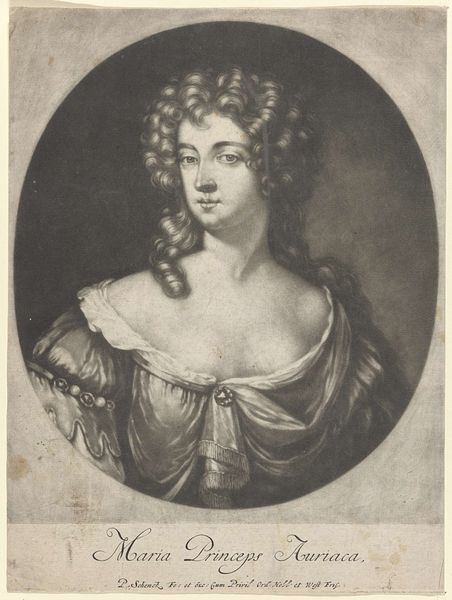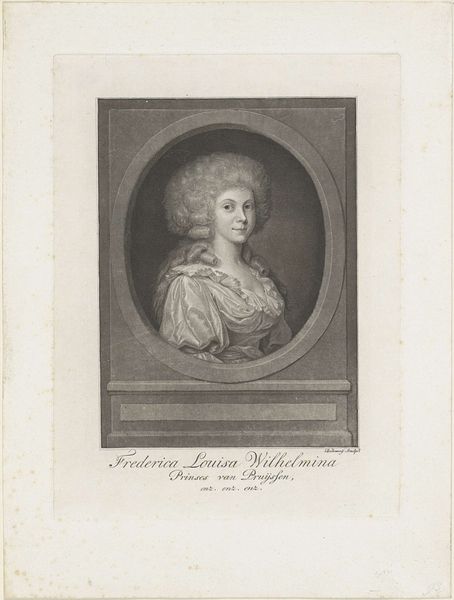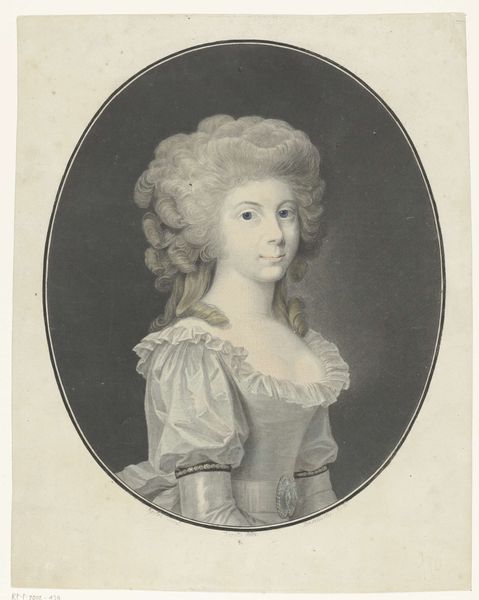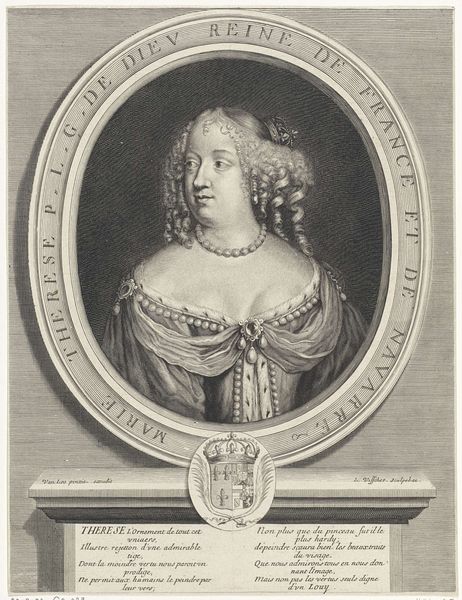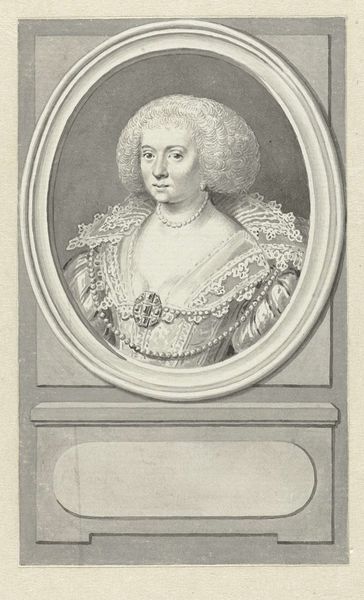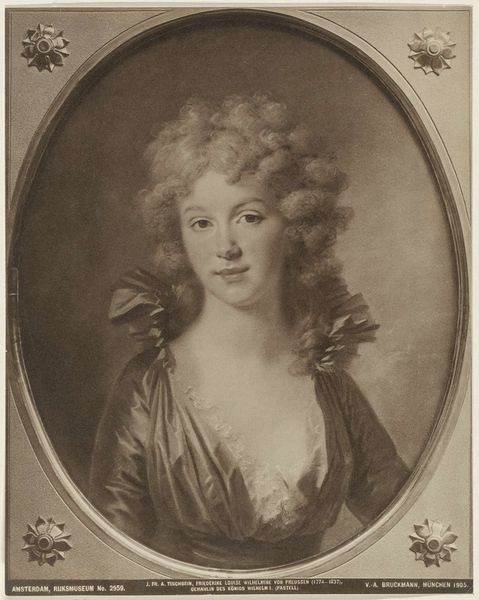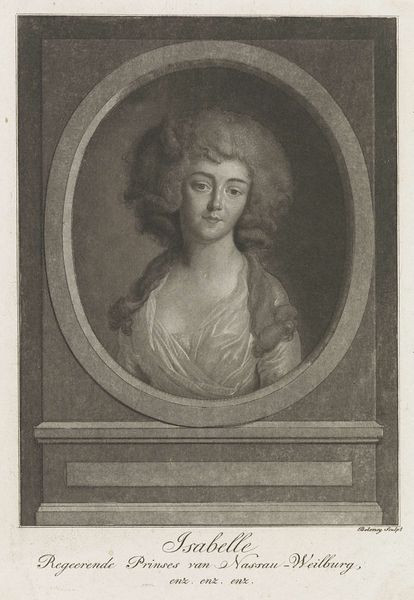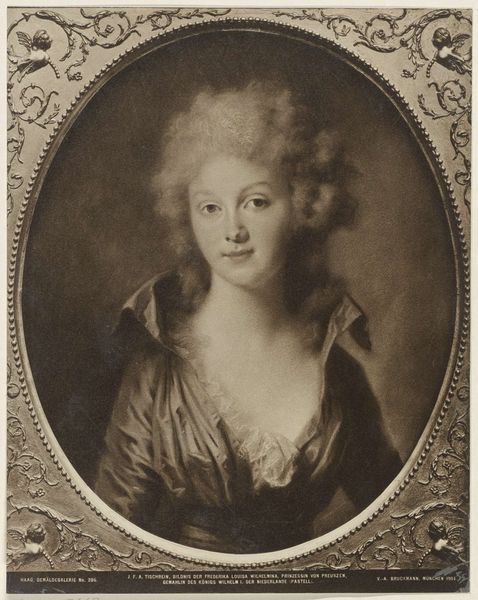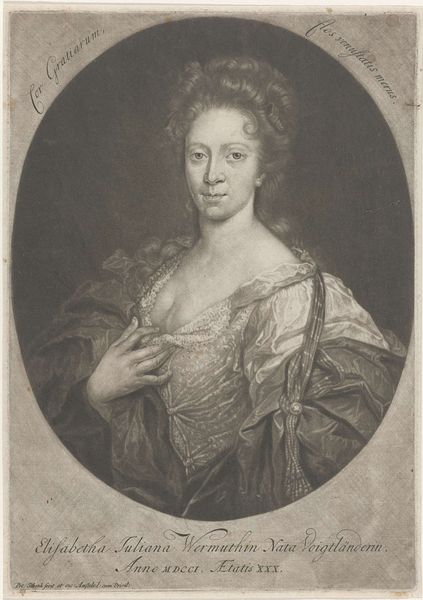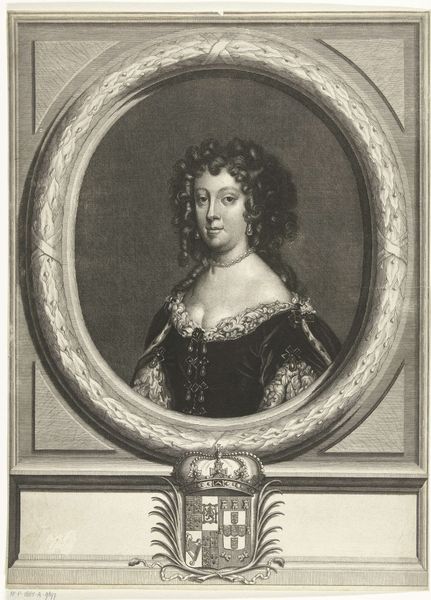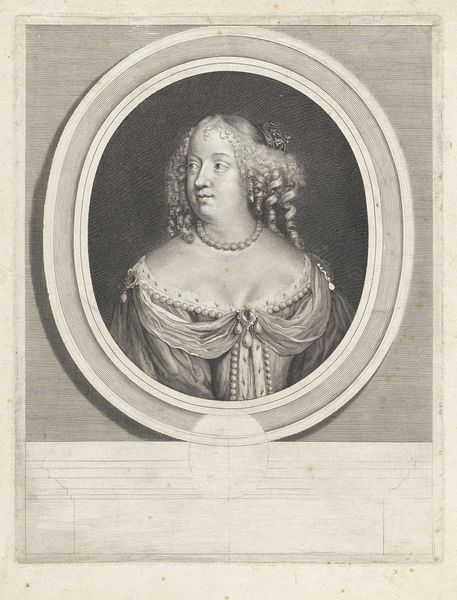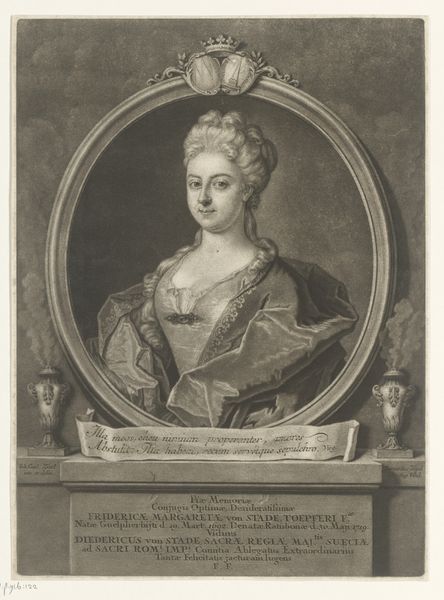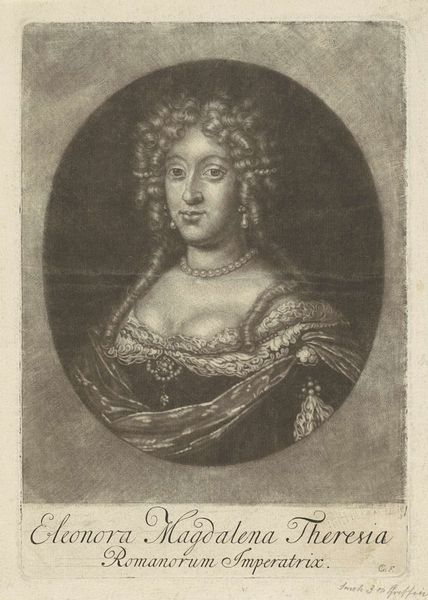
engraving
#
portrait
#
neoclacissism
#
engraving
#
miniature
Dimensions: height 209 mm, width 138 mm
Copyright: Rijks Museum: Open Domain
Editor: So this is "Portrait of Wilhelmina of Prussia," made between 1790 and 1819 by Benjamin Samuel Bolomey. It's an engraving, a miniature. The composition is pretty traditional; she’s framed in an oval. How do you interpret this work, particularly considering the historical context of portraiture? Curator: This portrait encapsulates a very specific social power dynamic. Wilhelmina wasn't just a woman; she was a Prussian Princess, whose image was strategically circulated through engravings like this. These miniatures, were instrumental in constructing and maintaining power, reinforcing notions of nobility and feminine ideals within the confines of an unequal social structure. Think about the message this sends, about who is worthy of representation and admiration. Editor: That's interesting. I hadn’t thought about it in terms of power. It feels…almost sentimental at first glance. How does the Neoclassical style play into that? Curator: Neoclassicism, with its emphasis on order and virtue, here serves to legitimize the aristocracy. The portrait flattens Wilhelmina into an emblem of monarchy rather than presenting her as a person. The control extends even to how femininity is presented—managed, contained within acceptable boundaries. Do you see any sense of a challenge to these conventions? Editor: Not really, she seems pretty demure. It's hard to see any subversive intention, if it's there at all. Curator: Exactly! And that’s key. The absence of challenge, the embrace of idealized representation, speaks volumes about the role of women like Wilhelmina and how their images were deployed to reinforce conservative values during a period of significant political and social upheaval. It wasn't just about art; it was about maintaining the status quo. Editor: Wow, that completely shifts how I see the engraving. I guess what seems like a simple portrait is a loaded representation. Curator: Indeed. By understanding the social forces at play and seeing Wilhelmina's portrait as a political act, we move beyond sentimentality into a critical analysis of art's role in power structures. It shows the significance of analysing art within the socio-political frame that produced it.
Comments
No comments
Be the first to comment and join the conversation on the ultimate creative platform.
